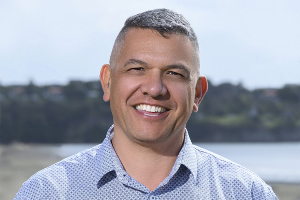
More than half board members say a 25 basis-point drop is needed now, given continued slowing in the economy and the labour market, and annual CPI inflation nearing the 1- 3% inflation target band.
The rest say the Reserve Bank should keep the OCR at 5.50%. One member considers there is still not enough evidence from the economic data indicators to justify a cut now.
There is an overwhelming consensus that an easing cycle should start soon.
Several members say the RBNZ should take a forward-looking approach to weakening economic conditions and ease the OCR at the next meeting, if not tomorrow.
However, one recommended waiting for GDP data and price indices to inform decisions.
Where the OCR will be in a year’s time had board members picking between 4% and 5%.
RBNZ’s flip-flopping not helpful
Meanwhile, Squirrel Mortgages chief executive David Cunningham says the Reserve Bank’s apparent “flip-flopping” in recent months is not doing it any favours.
He says it was positive that the RBNZ indicated in its last update that it was potentially changing its point of view from that of May, when it had discussed the possibility of another rate increase. But the quick change was not helpful.
“In the scheme of things, the RBNZ’s apparent flip-flopping won’t change the course of history. Inflation has been tamed – though not without considerable cost to consumers and businesses.”
He says the RBNZ’s structure is the problem and two changes are needed to how the Monetary Policy Committee (MPC) operates. The first is to remove the focus on consensus.
“In my experience shooting for consensus only encourages ‘group think’, and that’s one of the main causes of the inconsistencies in RBNZ messaging over the last few months.”
The scourge of committees is that they always tend to gravitate towards a central view, which can often be overly influenced by the opinions of one person or a specific group of people within that committee, he says.
Since the MPC was established in April 2019, this push for consensus has prevailed in almost every OCR decision. The exception was May 2023, when the vote was split 5-2 — with the majority calling for a 0.25% increase in the OCR, and the dissenting votes arguing for no change.
“Are these decisions really that black and white, or do the RBNZ staffers hold undue influence over what the committee does.”
At the time, governor Adrian Orr, told Parliament's finance and expenditure committee, “On the division in the committee, the voting, there is no division. It's a committee decision.”
Cunningham says diversity of thought should be celebrated—and division in opinion encouraged.
“With that context, every OCR review should be voted on and the MPC charter should be changed to something like: The MPC will seek in-depth discussion and robust debate, followed by a vote. The minutes of the MPC should reflect the varying views amongst committee members.”
Independent members needed
Secondly, he says the MPC needs to move to a majority of independent members, rather than the existing approach where the majority are RBNZ staff including Orr and three independent members.
Cunningham says RBNZ staff colleagues on the economics team produce the OCR and inflation forecasts, based on their read of economic indicators.
“That dynamic makes it tough for a large proportion of the MPC to call it out when they think the RBNZ’s economists may have got it wrong, or are perhaps missing the nuances of what’s happening on the ground—which is why independent MPC members play such a vital role.”
Central banks around the world use a variety of models, some with a majority of independent members. For example, The US Federal Reserve has seven members nominated by the president and confirmed by the Senate, while the Reserve Bank of
Australia (RBA) has nine members, of whom three are RBA employees and six are non-executive members. They make decisions by majority vote.
In Cunningham’s view, the structure of the RBNZ Monetary Policy Committee should be changed to ensure the majority are independent members—to encourage more diversity of thought.
HSBC on the same theme
HSBC chief economist Paul Bloxham says the challenge for the RBNZ is how different its forward guidance in May had been from market expectations, now and at that time.
Adding to this challenge, he says some of the key economic data the central bank forecasts - the CPI and unemployment rate - have turned out largely as the RBNZ expected, but the RBNZ's own projections for the cash rate are still a long way from market pricing.



